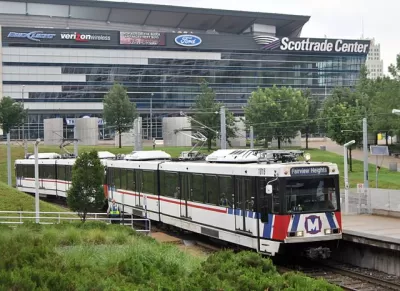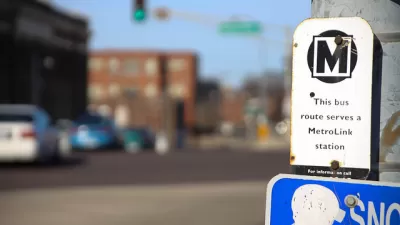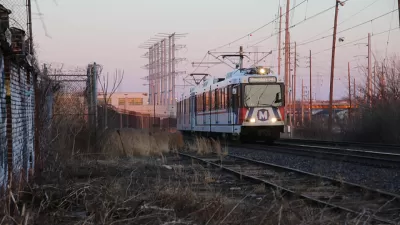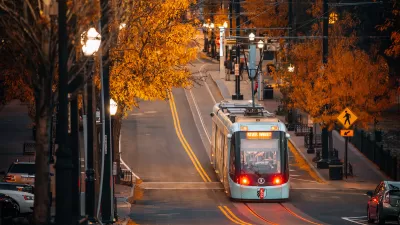St. Louis transit planners are evaluating the reasons behind a decline in transit use as the Metro Transit system prepares its first light expansion in years.

"Ridership on [St. Louis] MetroLink and buses has plunged by more than 20 percent over the last five years, a dip that comes as the light-rail system slowly moves toward its first expansion in more than a decade," reports Leah Thorsen.
"That decrease is split pretty evenly between the light-rail and bus systems, which riders often transfer between on a trip," adds Thorsen.
The context for this discussion is a plan to build a new north-south line in the Metro Transit system. "As those plans move forward, Metro has been assessing why ridership has fallen on existing routes and how to reverse the trend," according to Thorsen.
While the city's declining population and the cost of gas is briefly mentioned, the main focus of Thorsen's reporting is on crime. Security concerns are great enough that it's caused a political struggle between the County Council and Metro Transit. "The St. Louis County Council this fall held back $5 million from Metro for security funding until it can be convinced that concerns about rider safety have been addressed, and that police and Metro are working together," according to Thorsen.
FULL STORY: It's not just crime: Why have so many people quit taking public transit in St. Louis?

Study: Maui’s Plan to Convert Vacation Rentals to Long-Term Housing Could Cause Nearly $1 Billion Economic Loss
The plan would reduce visitor accommodation by 25,% resulting in 1,900 jobs lost.

North Texas Transit Leaders Tout Benefits of TOD for Growing Region
At a summit focused on transit-oriented development, policymakers discussed how North Texas’ expanded light rail system can serve as a tool for economic growth.

Why Should We Subsidize Public Transportation?
Many public transit agencies face financial stress due to rising costs, declining fare revenue, and declining subsidies. Transit advocates must provide a strong business case for increasing public transit funding.

How to Make US Trains Faster
Changes to boarding platforms and a switch to electric trains could improve U.S. passenger rail service without the added cost of high-speed rail.

Columbia’s Revitalized ‘Loop’ Is a Hub for Local Entrepreneurs
A focus on small businesses is helping a commercial corridor in Columbia, Missouri thrive.

Invasive Insect Threatens Minnesota’s Ash Forests
The Emerald Ash Borer is a rapidly spreading invasive pest threatening Minnesota’s ash trees, and homeowners are encouraged to plant diverse replacement species, avoid moving ash firewood, and monitor for signs of infestation.
Urban Design for Planners 1: Software Tools
This six-course series explores essential urban design concepts using open source software and equips planners with the tools they need to participate fully in the urban design process.
Planning for Universal Design
Learn the tools for implementing Universal Design in planning regulations.
Ascent Environmental
Borough of Carlisle
Institute for Housing and Urban Development Studies (IHS)
City of Grandview
Harvard GSD Executive Education
Toledo-Lucas County Plan Commissions
Salt Lake City
NYU Wagner Graduate School of Public Service





























